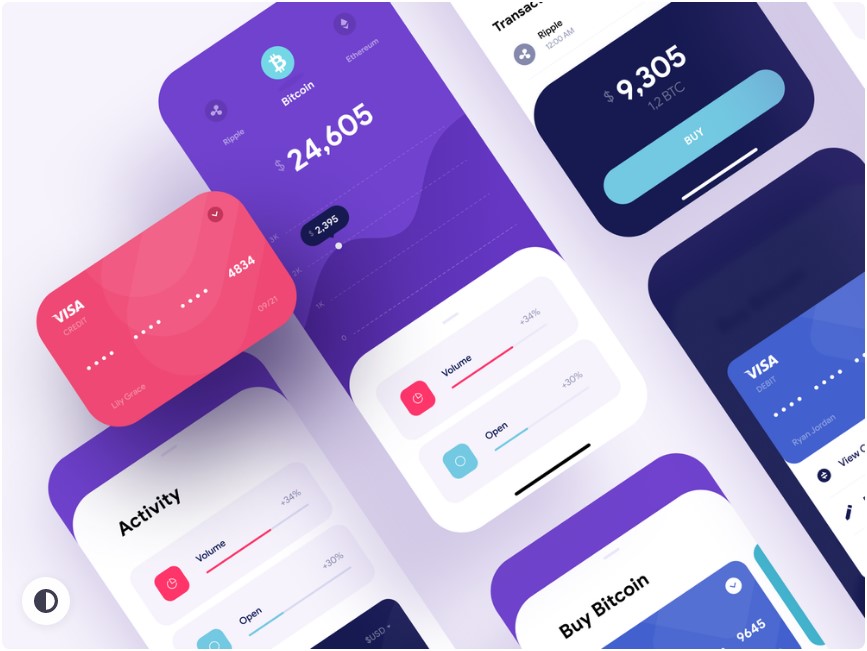
The home page is one of the most important parts of a website. It is often the first page visitors view after they have entered via a search engine. A homepage should contain a few of the most pertinent and interesting content items.
Aside from its function as a landing page, the home page should also serve as a showcase of the various content types contained on your site. A custom menu can be used to direct visitors to relevant content pages. This is especially important if you have multiple content types.
A home page is an ideal place to display your logo or business name. Common elements include a navigational bar or a dropdown menu on the top. These elements are useful for helping customers find products or services.

CTAs are a must-have on any homepage. Although the name for this piece of software isn’t quite as adorable as a cat’s name, it does a good job convincing prospects that you are worth their time. Including a call to action in the form of a button or popup is a great way to increase your conversion rate.
The best part about it is that it takes just a few moments to set up. If you have a Figma account for free, you can start designing your website's homepage in no time.
You might want to consider different types of content when creating your first homepage. This can vary from a simple home page to a series of blog posts. The goal is to keep your visitor on your website as long possible, no matter what it may be. Having a live chat option is a great way to do so.
Another way to stand out from the crowd is to use media-oriented content in your single homepage. For example, you can show off a photo or two of your most popular products or services. A video or animation can help give your site some extra energy.

The design is the most important part of a website's home page. It should be simple and functional. Using white space to improve readability can make the page more readable. To make sure the pages are readable, you may want to change your theme color scheme.
You can make a good homepage by taking the time to plan and organize your content. Also, be consistent with your posting times. It will help you save time later when it comes updating your website. These tips will help you create a website that is attractive to new visitors and keeps them coming back.
The home page is a small part of your website, but it's crucial to its success. It's a great way for visitors to get their attention and keep them on your website.
FAQ
Should I hire a web designer or do it myself?
If you are looking to save money, don't spend on web design services. Hiring someone else to make your website is a good option if you're looking for quality results.
You can build websites yourself without paying for professional designers.
If you're willing put in the work, you can create a website that looks great using tools like Dreamweaver.
It is possible to outsource your project to a freelance web developer, who will charge by the hour rather than per-project.
How To Create A Static Website
Two options are available when you create your first static web site.
-
Using a Content Management System (a.k.a. WordPress: This software can be downloaded and installed on your computer. Then you can use it to create an essential website.
-
Create a static HTML website: You'll need to code your HTML/CSS code. If you already know HTML, it is simple to do.
A professional may be able to help you create a large website.
Start with option 2.
How Much Does It Cost To Create An Ecommerce Website?
It depends on which platform you choose, and whether the freelancer is employed directly or through a service provider. Most eCommerce sites start at around $1,000.
Once you choose a platform to use, you can expect a payment of anywhere from $500 to $10,000.
A template is usually less than $5,000 if you plan to use it. This includes any customizing you do to your brand.
Do I use WordPress?
The best way to build an effective web presence is to start small. If you have the time and resources to build a full-blown site, then do so. But if you don't have these resources yet, starting with a simple blog might be the best option. As you learn to develop and design websites, you can always add new features.
But before you build your first website, you should set up a primary domain name. This will provide a point to which you can publish content.
How to design your website?
It is important to first understand your customers and what your website should do for them. What do they look for on your site?
What problems might they have if they don't find what they're looking for on your site?
Now you need to figure out how you can solve these problems. Your site must look professional. It should be simple to navigate and use.
You should have a well-designed website. It should not take too much time to load. If it takes too many seconds, people won’t be able stay as long. They'll move elsewhere.
You need to consider where your products are located when you build an eCommerce website. Are they all in the same place? Are they all in one place?
Decide whether you plan to sell one product at a time or several products. Are you interested in selling one type of product? Or multiple types?
When you answer these questions, your site can be built.
Now you need to worry about the technical side of things. How will your site work? Will it be fast enough? Can it be done quickly by people using their computers?
Are people able to purchase something without paying extra? Is it necessary for them to register before they are able to purchase anything?
These are essential questions that you need to ask yourself. When you have the answers, you can move on.
Statistics
- Did you know videos can boost organic search traffic to your website by 157%? (wix.com)
- It enables you to sell your music directly on your website and keep 100% of the profits. (wix.com)
- It's estimated that chatbots could reduce this by 30%. Gone are the days when chatbots were mere gimmicks – now, they're becoming ever more essential to customer-facing services. (websitebuilderexpert.com)
- At this point, it's important to note that just because a web trend is current, it doesn't mean it's necessarily right for you.48% of people cite design as the most important factor of a website, (websitebuilderexpert.com)
- In fact, according to Color Matters, a signature color can boost brand recognition by 80%. There's a lot of psychology behind people's perception of color, so it's important to understand how it's used with your industry. (websitebuilderexpert.com)
External Links
How To
Drupal 7 Web Design Tips
Drupal is today's most popular Content Management System (CMS). It was developed back in 2003 by Dries Buytaert from Belgium. Its name is derived from Dirk Buijtewaard's first and last names, Pierre d'Herbemont. Drupal was open-sourced in 2005. Many versions of the CMS have been developed since then. Drupal is used worldwide by many websites and businesses.
There are several reasons why Drupal is so popular among website owners. It's easy to use and free to download. It is also easy to modify and expand. Third, it is very well documented. It also provides excellent support via forums and IRC channels. It is also extensible through modules. Sixth it supports multiple languages. Seventh, it is easily customizable. It is also scalable. It is safe. Tenth, it is reliable. It is also supported by the community. Drupal is a good choice for your next project due to all of these factors.
You may be wondering what makes Drupal different than other CMS systems. It's simple. Drupal is an Open-Source Content Management System. This means that it is freely downloadable and completely free to use. Drupal gives you total control over your website. You can add and remove pages, change colors, fonts and images, as well as modify videos.
Drupal is the best option if you lack technical skills but want to build a website. Drupal, unlike other CMS, doesn't require you to know programming to build your website. All you need is to learn how to use the essential functions of Drupal. This will allow you to customize your website as per your requirements.
Drupal offers many plugins and themes that can be used to enhance your site's functionality. These plugins help you to enhance your site's functionality. You can use the Contact Form module, for example, to collect visitor contact information. Also, you can use Google Maps to display maps on your website. Drupal includes thousands of premade templates. These templates give your website a professionally designed look.
Drupal's flexibility is another advantage. You can add new modules and even replace existing ones without worrying about compatibility issues. You can do it quickly if you want to integrate social media into your website. You can also set RSS feeds up, subscribe to e-mails, and many other things.
Drupal is customizable. Drupal offers many options for customization, including the ability to create custom fields or forms and manage users. Drupal is capable of creating complex layouts.
Drupal is also reliable and sturdy. It is stable and scalable. It is also very secure. Drupal is an excellent web development platform.